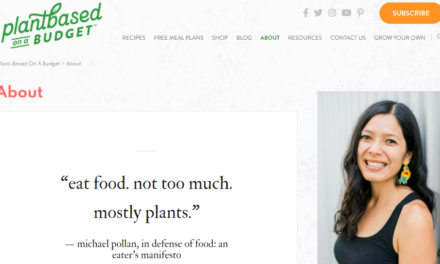
AUGUST 6, 2021
full tilt
YouTube Creator Makes Over $1M and Departs Regular Programming
Marketing content entrepreneur Miles Beckler is leaving the YouTube rat race even though he brings in an average $50K a month.
In less than five years, he’s grown his channel to over 184K subscribers and earned over $1M in revenue from affiliate marketing, membership programs, and more. But he’s achieved his goal, so he’s stopped regularly posting his videos.
What was that goal for his YouTube business? Achieve escape velocity. The phrase is a reference to Jeff Bezos and other uber-successful entrepreneurs who are building rocket ships to leave the Earth’s gravitational field.
Though Miles doesn’t want to escape Earth, he wanted to escape the YouTube chase.
In a 44-minute video, The End of an Era, posted to his YouTube channel, Miles shares his story and offers advice for content entrepreneurs just starting out and those who are figuring out what’s next. (That’s where we pulled the information for this article.)
“I’m not going to stay nostalgic about the fact that YouTube got me to this point. I honor that; I appreciate that. But YouTube can rug-pull people. I don’t trust YouTube at all. I’m grateful for it. I don’t trust it. What they allow in their spam (and) comments section is crazy,” Mile says.
But, he acknowledges, sometimes you have to live in that type of ecosystem to get what you need from a branding and business perspective. “But then, (you’ve) got to be able to make the shifts, the important shifts to the next level of the business, and that’s what I did here,” Miles says.
He did all the right things to launch and run a successful YouTube channel. He started with 120 videos in 120 days, eventually publishing about 700. He never invested a lot of money in his channel. He followed the chase – finding topics, video ideas, keyword phrases, and unique angles, hooks, and opportunities to teach things that others charged for. He persisted and consistently showed up to outwork and out-deliver value.
But this is not a story about the behind-the-scenes secrets to growing a YouTube channel. No, it’s a story about setting your business (and personal) goals and how to achieve them.
Tilt Advice
“We humans overestimate what we can do in one year, but we underestimate what is possible in five years,” Miles says, quoting Gates’ Law.
He’s almost hit the five-year mark: “I was able to build an audience and a brand. And that audience and brand are who I care most about right now. And this actually is why I’m changing my relationship with the YouTube algorithm.”
His business goal was never directly about money or followers. “I’ve led with value (for his audience) … and I have earned over $1M on this brand at this point,” Miles says. “I know exactly what it would take for me to grow to 1M subscribers on YouTube, and I’m going to be honest with you, I’m not willing to do what it takes.”
Miles created his five-year business plan with his personal goals in mind – something he thinks all content entrepreneurs should do.
“Design the life that you want,” Miles says, suggesting his perfect day exercise video if you want help. “Write out what you want. What do you want your life to be? Because I guarantee you, it’s not sitting at a computer, grinding it out 12 hours a day.”
Miles did the work and learned his lifestyle costs $6.2K a month. If his business earned $12.5K a month, it could cover his expenses, and he could save a good percentage too. (He’s a big advocate of saving and investing to create freedom from the full-time work.)
With your personal and professional goals set, Miles’ instructions are simple though the work is hard: “Then you just go create value as your job, and you really focus on, ‘If I help enough people get what they want, I can have anything I want.’”
As for what’s next for Miles? He’s still creating content, now focusing on creating courses around affiliate marketing.
– Ann Gynn
To learn more about the life Miles is living today and his advice on how to get started as a content entrepreneur, read the longer article.
Content Entrepreneur Tests First Book’s Concept with Kickstarter Campaign
Entrepreneur: Ruby McConnell
Biz: Author
Tilt: Outdoor life
Channels: Blog Instagram (1.6K) Twitter (3.3K) speaking engagements
Rev Streams: New book deals, book sales, paid content pieces
Our Favorite Actionable Advice
- Find your audience first. Ruby ran a Kickstarter to validate what content people would pay to read before she ever approached a publisher.
- Don’t just scream into the void. With what she calls a “conscious social media practice,” Ruby engages with people who are most likely to purchase her books.
- Know your motivation. Know why you do what you do and use that to inform your business model.
Some of the Story:
Ruby McConnell has held a wide array of jobs, from a staff geologist and college instructor to a dancer and circus performer. Since 2016, she has been building her content business, starting with the publication of her book, A Woman’s Guide to the Wild, which has sold more than 20K copies. On the heels of that success, she wrote A Girls Guide to the Wild for younger readers, accompanied by a nature journal and activity book.
In 2020, she published her latest work, Ground Truth: A Geological Survey of Life, which examines how landscapes impact families, communities, and lives. She is a passionate activist whose end goal is “to feel like I’m really heard and feel like people change their behavior. That I helped them reach the conclusion that they could and should do that,” she says.
Ruby’s ideas for her first book, A Woman’s Guide to the Wild, can be traced way back to 2006. However, she knew she needed financial support to make the leap to work on it in earnest. “I was working all these jobs, and I knew I had to quit some of them if I’m ever gonna get this book done. But I was poor, so I didn’t need a lot of money to quit a job. And at that time, Kickstarters were brand new, so I did a Kickstarter,” she remembers.
“I made this video and was like, ‘Hey, this is my work; this is who I am, and this is what I’m writing, and I need to be able to take some time off to get this done and pitch it to publishers.’ And people supported it,” she says. “That made it easier to go to independent presses as a first-time author with no social media platform to speak of and say, ‘I have concrete proof that this is a viable product that people support because they’ve supported this Kickstarter.” Her campaign raised more than $5K and had 88 backers.
And it worked. Those presales caught the attention of a publishing house, Sasquatch Books. “I submitted without an agent and got pulled out of the slush pile from the first publisher that I submitted to,” she says.
– Kimmy Gustafson
All the Story: To learn more about what Ruby calls “conscious social media” and how to practice it, plus her best advice for content entrepreneurs, check out the longer story.
quick talk
Caught on … Twitter
“The benefit of building in public is an audience when you launch. The cost is the public embarrassment if you fail. The trick is realizing no one cares that you failed. They’re impressed that you tried.” – Sahil Lavingia
things to know
Money
-
Revenue and more: Patreon’s phase two for creators? Health care, retirement, savings, operations management products. And more mature monetization tools for work in e-commerce and one-off video payments. (The Information)
Tilt Take: Smart play by Patreon. Content entrepreneurs can’t just focus on the creation side (as The Tilt’s recent research shows) in running their businesses. -
Mix in managers: Stir, a one-stop platform for creators to unite all their revenue streams, has added a managers feature. Now, people who work with multiple creators or creators who work with multiple people can manage the payment distribution side more easily. (Stir)
Tilt Take: Managers can be invaluable as a content business grows. They let founding creators who may not be (or want to be) business savvy focus on the creation side.
Audiences
-
492: That’s the average number of videos before a top YouTuber hits 1M subscribers. In an analysis of 10 YouTube channels that recently crossed the 1M subscriber threshold, the average creator took about four years to achieve that goal. (Simon Owens)
Tilt Take: Simon’s analysis mirrors what we’ve found: Overnight success isn’t possible for strong, sustainable content businesses. -
Give out your medals: Facebook has upped its badges game. They now appear next to a member’s name on comments, posts, and profiles in your group.
Tilt Take: A visual signal to recognize your fans, subscribers, etc.? Yes, please. So make sure to turn on the option in your Facebook group. (And we’d love if Facebook would add special badges that could be awarded to individual champions.) (SocialBu; h/t Cory Cachola)
Tech and Tools
-
How high?: How-to video app Jumprope joined the LinkedIn family. Jumprope is a tool for creators to develop how-to videos that can be shared on every social platform. The acquisition move comes as LinkedIn (like everybody else) wants to retain its most popular creators. (Social Media Today; h/t tl;dr marketing)
Tilt Take: It’s a strong indicator that the professionally-focused platform is eager to expand more deliberately to do more on the content creator side of things. -
Iterate: Recording label Columbia has kept teen rapper Kid Laroi’s debut album on the Billboard charts for a year by releasing “deluxe” versions with additional tracks throughout 2021. (The New York Times)
Tilt Take: You don’t need to start from scratch every time. What content are you creating that you could iterate throughout the year to grow and retain your audience, rankings, and more?
And Finally
-
eBay execs harass content entrepreneur: A couple who published a newsletter for eBay sellers drew a lot more than the ire of the platform. Eventually, events would lead to criminal charges against six eBay employees and a contractor (five pleaded guilty) and contribute to the departure of eBay’s chief executive. (Boston Globe)
Tilt Take: OH MY GOSH. We were astounded to read the story of how these people who turned their newsletter into a full-time business were harassed and intimidated, all because eBay wasn’t a fan of what they were writing. -
Get out of your head: Not sure what to create about? 1. Grab paper and pen. 2. List 10 big concepts around a topic you’re now interested in (and relevant to your business). 3. Write as many words around each big concept. 4. Pick the most interesting big concept. 5. Write down five questions related to it. (The Long Conversation)
Tilt Take: Creator’s block is a real thing. We’re always eager for ideas on how to break through them.
we’re a stan for Shamook
YouTuber Shamook (100K) has taken his knowledge of machine learning and AI to Hollywood. The content entrepreneur specializes in creating deepfake videos, placing actors in movies they were never in as well as improving poor computer-generated imagery (CGI) in classic scenes.
Shamook began his channel in 2018 and turned it into a successful content business through sponsorships with brands like tech company Paperspace and Patreon, where he lets subscribers vote on new videos, access his Discord server, and get his help on their own deepfake videos. (He doesn’t make any money directly from YouTube because of copyright issues around his videos.)
But Shamook’s most interesting accomplishment happened in the past seven months. In late December 2020, he released his improved video of the CGI Luke Skywalker in The Mandalorian season two finale. The improvements were stunning, and the video has been viewed over 3.2M times. It got the attention of Lucasfilm, which hired Shamook as a senior facial capture artist for its Industrial Light and Magic brand, according to IndieWire.
Why we’re a Stan: We love the twist – Shamook created content critical of how Lucasfilm did the original. Instead of getting a cease-and-desist letter, he got a job. We’re pleased to hear now that he’s been on the job awhile, he expects to find time to resume his content business and upload new videos on YouTube.
– Leo Bonacci
the business of content
In this week’s Content Inc. podcast, Joe interviews Fold Factory’s Trish Witkowski. Trish breaks down the secret to her success on YouTube and how she generates multiple lines of revenue from building an audience through video.
In the latest this This Old Marketing podcast, it is all about the race to first-party data. Joe and Robert also discuss how Gap launches AthletaWell in a big content marketing move, and rant all over the Olympics for what could have been.
the tilt team
Your team for this issue: Joe Pulizzi, Ann Gynn, Laura Kozak, Marc Maxhimer, and Dave Anthony, with an assist from Kimmy Gustafson, Leo Bonacci, and Don Borger.
Get more of the Full Tilt stories on TheTilt.com.
Know a content creator who’s going full tilt? DM us or email [email protected]
Was this email forwarded to you? Get your own sub here.
Copyright ©2021 Tilt Media LLC All rights reserved.
Unsubscribe | Update your profile | 17040 Amber Drive, Cleveland, OH 44111





